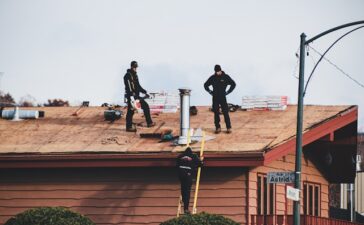Here is the definitive resource for choosing strata communities! Whether you’re seeking to buy your first house or are just starting over, picking the perfect stratum neighbourhood can have a significant impact on your day-to-day activities. But how can you choose the best option for you when there are so many available? Rest assured, we have you covered.
We’ll walk you through all you need to know about strata communities in this extensive guide. Consider this your go-to resource for discovering the perfect strata community, from learning about them and the various kinds that are available to investigating the advantages of living in one and posing crucial questions before deciding.
So take a cup of coffee (or tea, if you prefer), settle back, and let’s explore this fascinating world of strata communities together!

Knowledge of Strata Communities
You might wonder, what precisely is a strata community? Imagine it as a shared living situation, where several properties are housed in a single building or complex. In addition to sharing ownership and accountability for the common areas and facilities, each property owner is the owner of their own flat or unit.
A body corporate, often known as an owners’ corporation, is usually in charge of overseeing the general upkeep and management of strata communities. This can involve things like keeping up with communal areas and gardens, scheduling building maintenance, setting up insurance, and enforcing rules to guarantee everyone’s enjoyment and safety.
Being a part of a bigger collective is what it means to live in Select Strata communities. It presents benefits as well as obligations. On the one hand, homeowners can use common areas such as parking lots, gyms, swimming pools, and even communal gardens without having to pay the entire fee each time. However, in order to preserve peace among the locals, there might be some laws and guidelines that must be adhered to.
Before deciding to move into a stratum community, it is important to understand how they are run. It’s crucial to become acquainted with the governing papers, such as bylaws or rules, which specify your rights and responsibilities for your own property. You should also be aware of any limitations on repairs and pet ownership.
In the end, however, strata communities offer a desirable choice for a large number of individuals looking for social connection, convenience, and amenities close to home.
Let’s now investigate several stratum community kinds!
Strata Community Types
It’s critical to comprehend the many kinds of stratum communities before choosing one. You can choose the type that best suits your lifestyle by taking into account the distinct advantages and considerations that each type offers.
Residential stratum complexes are a typical kind of strata community. These are usually composed of townhouses or apartment complexes where each unit is privately owned but shares communal amenities including parking lots, gardens and swimming pools. With this configuration, homeowners can take advantage of common areas without compromising their privacy.
Commercial strata communities are an additional choice. These are frequently seen in mixed-use developments, where residential apartments are located over ground floor shops. The advantage is that stores and services are conveniently located near your home.
Then there are strata communities for retirement villages created especially for senior citizens looking for a stimulating and encouraging atmosphere. These communities provide a variety of amenities, like social events, healthcare centres, and transportation services, that are specifically designed to meet the needs of elders.
Resort-style strata communities offering golf courses, spas, and concierge services are available for luxurious living. Those seeking an upscale lifestyle are catered to in these private communities.
Having a better understanding of these different kinds will enable you to select a stratum community that best suits your needs and tastes.
Advantages of Strata Community Living
Numerous advantages make strata community living an appealing option for many individuals and families. The shared accountability for upkeep and repairs is one of the main benefits. In a stratum community, parking lots, gardens, and swimming pools are maintained by the owners jointly. This lessens the load on each individual and guarantees the upkeep of these facilities.
The sense of security that comes with residing in a close-knit community is another advantage. Security features like video cameras and gated gates are frequently installed in strata communities, which can make members feel safer. Furthermore, having neighbours close by might add an additional degree of security and help in case of crises or while you’re on vacation.
Additionally, access to a range of services and facilities that might be beyond of reach for individual homeowners is provided by strata communities. These could be tennis courts, playgrounds, fitness centres, or even clubhouses where locals can get together and throw events. These facilities improve the community’s general standard of living.
Furthermore, through planned events like BBQs or Christmas parties, living in a strata community promotes social contact and a stronger sense of belonging among residents. This gives neighbours who have similar hobbies or lifestyles the chance to become friends.
Additionally, living in a strata community gives you access to professional management services that take care of administrative duties like insurance coverage, financial planning, and legal issues pertaining to shared ownership spaces. By relieving you of this burden, you can concentrate more on enjoying your home.
Living in a strata community has several benefits, such as splitting up maintenance duties, having better security, and having access to wonderful amenities all while building relationships with other residents!

Crucial Questions to Consider When Selecting a Strata Community
It’s critical to ask meaningful questions when selecting a strata community. You may then compile all the information you need to make an informed choice that fits your needs and way of life. Before choosing a strata community, consider the following important questions:
- What is covered by the monthly payments and what are they? It’s critical to comprehend the financial obligations related to living in a strata community. Inquire about any prospective fee increases or other expenses.
- Will there be any impending renovations or special levies? It is imperative to ascertain whether any upcoming maintenance projects or improvements would necessitate extra fees from the inhabitants.
- How does the community’s decision-making process operate? Learn the process used to decide on laws, rules, fixes, and enhancements. This can help you gauge the extent to which you can influence the design of your living space.
- Are rental homes and pets subject to any restrictions? In the event that you intend to rent out your house or have pets, make sure the strata community permits these kinds of agreements.
- What facilities and services does the complex offer? Ask about amenities that improve your quality of life, like parking spots, pools, gyms, common areas, security measures, and the availability of maintenance personnel.
- How well-kept is the building? Inquire about the complex’s routine maintenance schedule and inspection policies to ascertain its general state.
- How does the community feel about itself? It can significantly affect your experience living there, so think carefully about your preferences. For example, if it’s family-friendly while you’re single and childless.
- Do residents have any pending legal matters or disagreements? Early detection of conflict can help prevent unpleasant circumstances later on.
You may learn a lot about what it means to live in a specific stratum community and whether it meets your needs by asking these kinds of questions. Additionally, spend some time conversing and visiting with the present residents.





